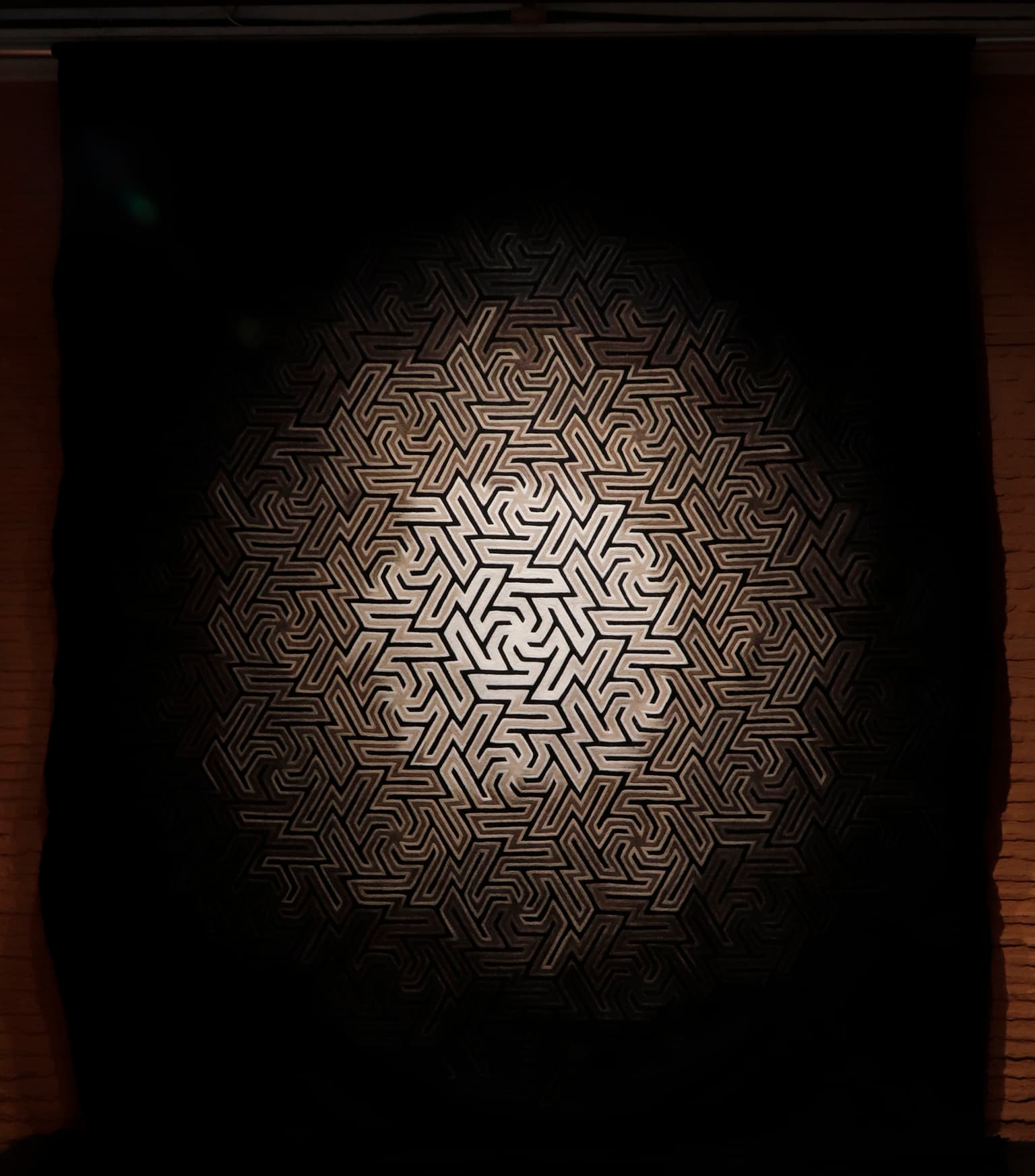Serap Ekizler Sonmez & Rumeysa Kis in collaboration with Antalya Olgunlaşma Enstitüsü
Artists
Serap Ekizler Sonmez & Rumeysa Kis in collaboration with Antalya Olgunlaşma Enstitüsü
Serap Ekizler Sonmez / Independent scholar, expert on Anatolian geometric patterns. Rumeysa Kis / interior designer
Serap Ekizler Sönmez / SPDO Architecture. Rumeysa Kis / Persan Tekstil.
Istanbul, Turkey
Statement
The most apparent metaphor in this design is cycle. Thus it takes us to the theory of "felek". The term felek, meaning "where the stars float", is embodied in “pinwheel” patterns in art. Each unit cell has a hidden six-pointed star in the design. The six-pointed star is “şekl-I ferd” in Sufism and related to individuality and insan-ı kamil (perfect human being). Two equilateral triangles juxtapose reversely in the centroid, and this refers to “completeness” of masculine and feminine components of human soul in a balanced individual. “Sema” means "whirling", the basis of Sufi rituals in Anatolia.
Artworks

Sema ( Whirling )
600 x 400 x 2 cm
Needle felt technique on kicked felt fabric
2019